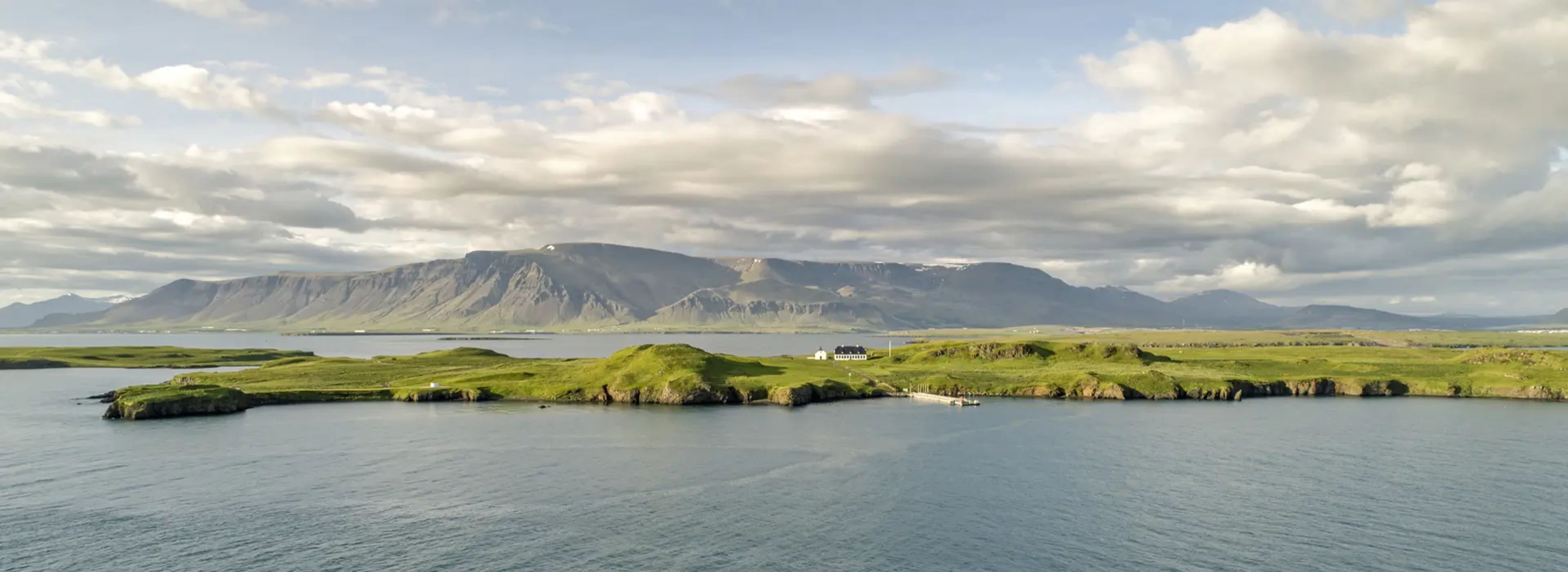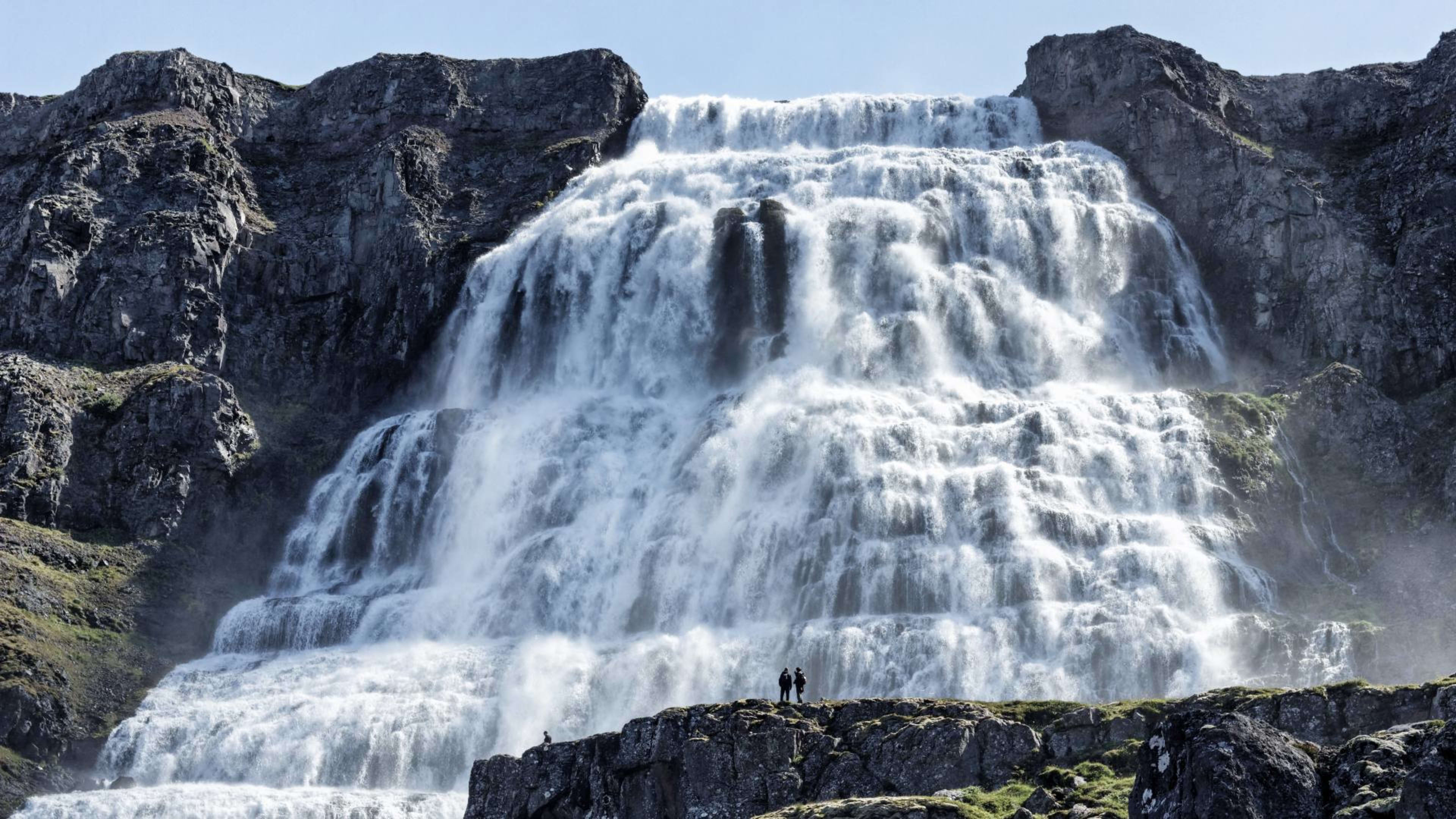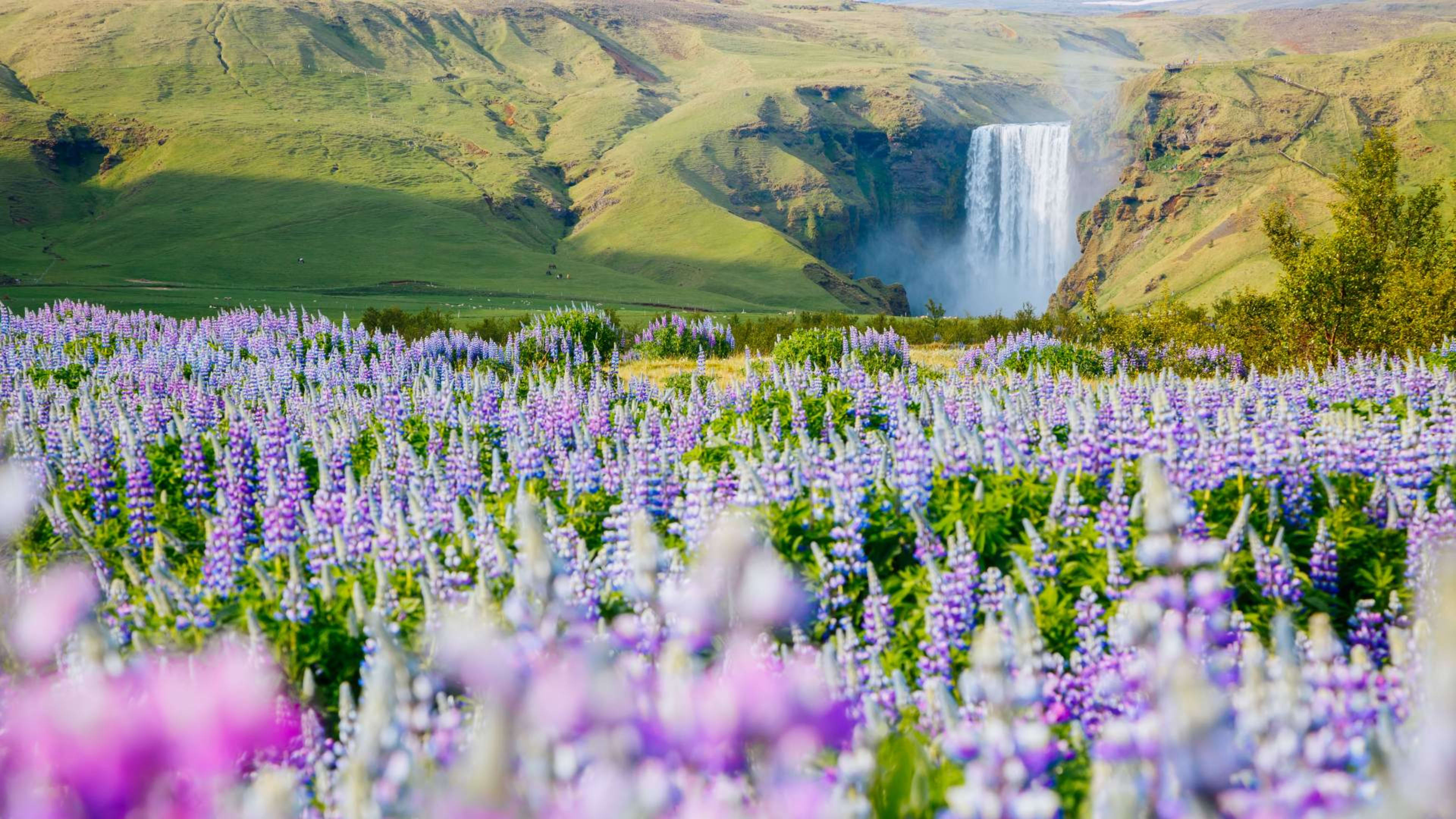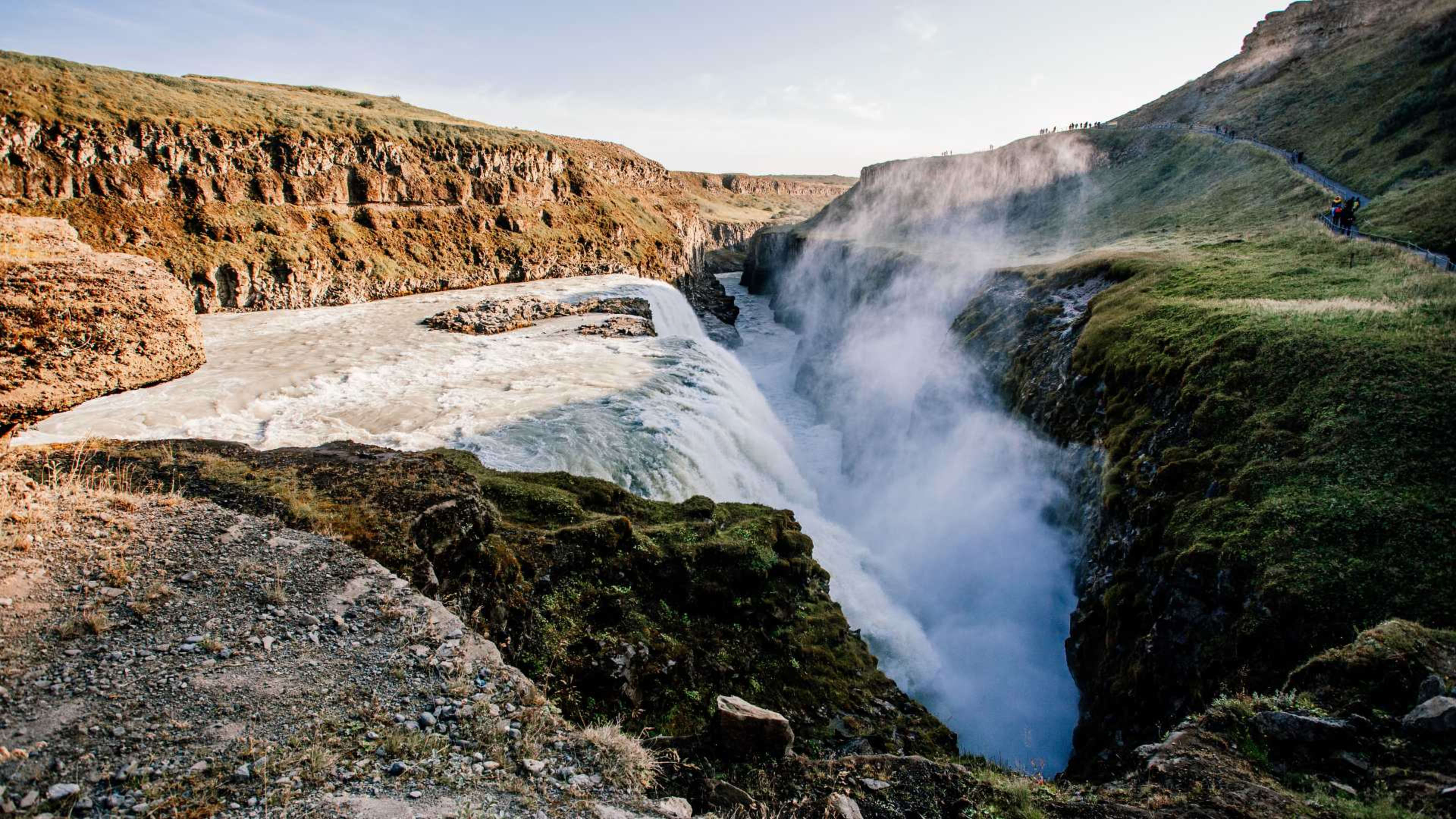Interested in visiting Iceland in May? Or trying to find a fantastic destination for your upcoming May vacation? Look no further!
In this article, we unveil it all for you: the best things to see in Iceland in May, our favorite activities to do at that time, and what you can expect of the weather (with a useful packing guide).
We even share our top reasons to make Iceland your next May getaway – just in case you need more convincing.
- Explore these summer vacation packages in Iceland.

Is May a good time to visit Iceland?
Yes! Actually, May is an excellent month to visit Iceland. And we’ve got all the reasons you might need to book your Icelandic getaway in late spring or early summer.
Top 10 reasons to visit Iceland in May:
- Longer days with an average of 20 hours of daylight
- The weather is warming up
- Less crowded than at height of summer (June-August)
- Ideal for whale watching as it is the start of the feeding season
- More availability as accommodation and activities can book out early in summer
- Blooming nature
- Puffins start arriving to nest along Iceland’s coast
- Beginning of camping season
- Beginning of hiking season
- Snow-topped mountains for stunning backdrops
Not convinced yet? Continue reading to find out what you could get up to and all the amazing places you could visit.
- Related: Iceland in spring – Your guide.
Best things to do in Iceland in May
With the arrival of the summer season, there are longer daylight hours to explore and even more outdoor activities to take on.
The best 10 things to do in Iceland at this time are:
- Going hiking along the coast
- Dipping in natural hot springs in the countryside
- Meeting Icelandic horses to go riding
- Adventuring yourself on top or inside a glacier
- Walking inside a lava tunnel or touring an ice cave
- Taking a whale-watching tour
- Spotting puffins and going bird watching
- Spending time on the red or black sand beaches of Iceland
- Touring the Ring Road
- Feeling the mist of majestic waterfalls
- Look up all the great activities you could add to your Iceland itinerary.

Events in Iceland in May
From April and May, Iceland opens up after a dark winter and there are plenty of celebrations to join in. In May, you could attend one of the biggest events of the Icelandic cultural calendar, the Reykjavík Arts Festival.
Two smaller festivals may also interest you. There is the Vaka Folk Festival in Akureyri, which welcomes the top folk performers from Iceland and Northern Europe.
Closer to Reykjavík, at Stokkseyrarsel farm near Selfoss, you could attend Saga Fest. It is a music and arts festival based on storytelling and the Icelandic Sagas.
Best places to visit in Iceland in May
And where should you go if you’re visiting Iceland in May? You have probably heard of some hot spots, but here are our suggestions:
1. Reykjavík
It’s never a bad time to visit Iceland’s capital, but in May the buzzing summer atmosphere starts to set in. You’ll find even more events, festivals, and activities to take part in.
Here are the top things you can do in Reykjavík during the summer months:
- Go on a food tour around the city to get a taste of Iceland
- Head to the harbor to board a whale-watching cruise
- On rainy days, visit the Perlan to see its interactive exhibition about the wonders of Iceland
- Explore the nature trails on the nearby Viðey Island
- Hike up Mount Esja to get a sweeping view of the surroundings and capital city
- Dip your feet in the Atlantic Ocean or soak in hot tubs on Nauthólsvík Geothermal Beach
- Take in the view of the city from the top of Hallgrímskirkja
You could also book an array of day trips from the capital, from visiting the Golden Circle to taking helicopter rides.

2. Golden Circle
If you’re in Iceland for a shorter period, don’t miss visiting the highlights of this famous route. It is perfect for a city break as it is a fantastic day tour from Reykjavík.
See the wonderful waterfalls of Faxifoss and Gullfoss. Explore Þingvellir National Park, where you can observe the tectonic plates and even go snorkeling between them.
- Check out the Golden Circle on one of these guided group tours.
And finally, see the OG of geysers! Geysir isn’t as active anymore, but its neighbor Strokkur erupts columns of hot water in the air every 6-10 minutes.
3. South coast
There are so many highlights to check off your bucket list on the south coast, so we had to include it as one.
Some of the most famous waterfalls in Iceland, Seljalandsfoss and Skógafoss, are located here. Seljalandsfoss is especially popular because you can walk behind the fall, giving you a different perspective.
You’ll also find two of the most famous black sand beaches in Iceland. Reynisfjara is near the lovely town of Vík í Mýrdal. From here you can admire the basalt columns of the cliffs and see the rock formations of Dyrhólaey and Reynisdrangar.
A word to the wise: be careful of the waves on Reynisfjara. They can come up quickly and the currents are really strong.
Further along, Diamond Beach is a stunner. You’ll be able to admire glistening chunks of ice on the stark black sand. And literally across the road from here, you can admire more icebergs along the stunning Jökulsárlón glacier lagoon.
- Look up our summer camping tours of Iceland.

4. Vatnajökull National Park
As you journey from the south coast to North Iceland, you’ll travel along the Vatnajökull National Park. It stretches this far covering nearly 15% of Iceland’s landmass.
With such a diverse landscape, you’ll find plenty to enjoy inside this vast park. The protected area includes 10 volcanoes and a large ice cap. It’s no wonder it was named a UNESCO World Heritage Site in 2019.
We recommend you visit the Skaftafell area in the south. Here you’ll find plenty of great hiking trails, with scenic valleys and mountains to explore. In Jökulsárgljúfur, in the north, don’t miss the glacial river canyon and the many majestic waterfalls.
5. Snæfellsnes peninsula
This peninsula stretches 86 kilometers (55 miles) into the Atlantic Ocean from Iceland’s western coast.
It is renowned for being “Iceland in miniature.” It means that in this region you’ll find a bit of everything that makes up the Icelandic landscape. From vast lava fields to grand waterfalls, scenic cliffs to quaint fishing villages, and more.
It is also the location of the Snæfellsjökull National Park and its subglacial volcano.
Points of attractions include:
- Admiring the impressive Gerðuberg basalt cliffs
- Walking to the stark Búðakirkja black church amidst lava fields
- Hiking up to the Eldborg crater
- Spotting the iconic Kirkjufell Mountain (you may recognize it from Game of Thrones!)
- Going bird watching at the cliffs of Arnarstapi
- Visiting the local museums in the main town, Stykkishólmur
- Taking in the sweeping sea views from Djúpalónssandur
6. Westfjords
As May is the start of the hiking season, we recommend driving up to the Westfjords for an off-the-beaten-path adventure. This region, in the north-west of Iceland, is a fantastic destination for coastal scenery.
We recommend you visit the Hornstrandir Nature Reserve. It is ideal for long walks with scenic views. Here you’ll also find one of Europe’s largest bird cliffs, Látrabjarg. And from late-April until August, you can observe the cute puffins who make it their home.
- Book a hiking tour of Iceland for a memorable adventure.

7. Westman Islands
You could visit the Westman Islands, or Vestmannaeyjar, from Reykjavík, or add it to your itinerary as you visit the south coast.
The main island, Heimaey, is ideal for a day tour to learn about this volcanic island’s history. Don’t miss the crater and lava left from the 1973 volcanic eruption that buried a part of the island.
You could even book a boat tour around the island. This way you’d get to admire the teeming birdlife, including the world’s largest puffin colony, and maybe even spot some whales.
8. Diamond Circle
So, you’ve heard of the Golden Circle, but not the Diamond Circle? This is another one of Iceland’s most popular sightseeing routes.
Located in the north of the island, it encompasses the amazing landscapes of the Lake Mývatn area, coastal scenery of the Tjörnes peninsula, and the Jökulsárgljúfur National Park.
Don’t miss:
- The most powerful waterfall in Europe, Dettifoss
- Ásbyrgi, a lush, horseshoe-shaped canyon
- Iceland’s capital of whale watching, Húsavík
- Goðafoss, the “Waterfall of the Gods”
- Lake Mývatn Nature Reserve
- Check out these summer self-drive tours of Iceland.
What about the highlands?
Did you hear about the fantastic hiking trails located in this remote area of Iceland? They are colorful, memorable, and ideal for hikers looking for their next challenge.
Weather in Iceland in May – What to expect
May marks the beginning of the summer season in Iceland. The country is opening up again with better weather and more travel opportunities. But in May things are only starting to ramp up and therefore quieter than during the peak summer months of June to August.
May, together with September, is known as the shoulder season. And these are good times to visit Iceland if you want to enjoy decent weather, longer daylight hours, and fewer visitors.
So what can you expect from the weather in May? It is a transitional month between spring and summer, so temperatures are usually mild. The average temperature is around 6 °C (43 °F), with possible highs of 10-15 °C (50-59 °F).
The weather is changeable all year long, so it’s best to be ready for anything when traveling to Iceland.

Does it snow in Iceland in May?
It is unlikely to snow in Iceland at this time of year. In early May, it may snow in the north, but this is rare. What you’re likely to see are snow-topped mountains on the horizon. It depends on the year’s weather, but at least it makes for a beautiful backdrop.
Can I see the Northern Lights in Iceland in May?
In May, it is unlikely you’ll see the Northern Lights in Iceland. You need proper darkness to spot them in the sky and the number of daylight hours will make it very difficult.
To see them in summer, your best bet is to visit between late August and September. Or more specifically take a winter trip to Iceland between October and March for Northern Lights galore. Those are quieter months with longer nights, giving you more opportunities to see the famous Aurora Borealis.

What to pack to travel to Iceland in May?
As we said previously, even in May, Iceland’s weather can be unpredictable. For that reason, we advise that you pack for all possibilities.
The top tip is to bring plenty of layers. So if it’s cooler or warmer than expected, you can add or remove layers to adapt to the day (even hour!) ahead of you.
In the Nordics, we have the saying: 'There is no such thing as bad weather, just bad clothing'. Keep that in mind and you won’t miss out on any of the great days of exploration and activities you have booked.
Here is a list of packing essentials for your trip to Iceland in May:
- Short-sleeved shirts and lightweight layers
- Fleece or lightweight wool jumpers
- Waterproof and windproof jacket or shell layers
- Waterproof trousers
- Gloves, scarf, and warm hat
- Cap and sunglasses
- Sturdy walking or hiking boots with good socks
- Thermal underwear and socks
- Binoculars for wildlife watchers
- Swimwear, flip flops, and towel to go for a dip
Planning your May trip to Iceland
What do you want to see most? How do you want to travel? And how long do you want to stay? Answer these questions first and you’ll have a better idea of how to prepare for your journey.
Whether you want to camp, stay in hotels, take a road trip, or guided tours, Iceland has it all. Pick what suits you best and start reserving. Accommodation, tours, and activities can book out early in summer, so make sure to start early.
Or let us help you! Iceland Tours is run by local travel experts based in Reykjavík. We have crafted tours based on popular routes and with plenty of added benefits for you to have a memorable trip.
When you’re ready to make your dream trip to Iceland a reality, get in touch or browse our tried-and-tested packages to pick the one that’s right for you.
It’s simple enough to book via our website. Select your vacation start date and length of travel and then pick your car, accommodations, and activities based on your budget. Then all you have to do is enjoy yourself. See you next May!




